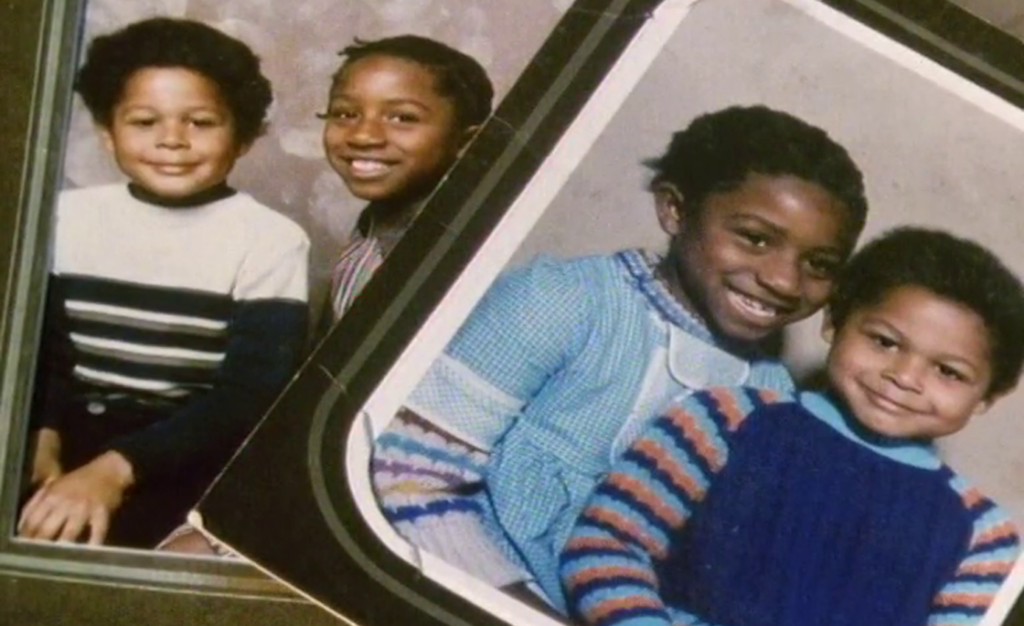What first inspired you to make your documentary?
I was a political activist and filmmaker in the 1980s so, as a lesbian, I felt it was important to document and bear witness to the social injustices that surrounded me. I’d made another documentary, Veronica 4 Rose, for Channel 4, because I’d become aware of the escalation of teenage lesbian suicides, and felt it was necessary to portray positive role models and provide a growing support system. But with Breaking The Silence, I wanted lesbian mothers to feel empowered and to know that they weren’t alone. And it was important for wider society to know what happens to lesbian mothers in custody cases, and to have the normative society’s preconceived ideas about lesbians challenged.
You’re British-South African, so why was the focus on the UK rather than other countries?
I wasn’t allowed in South Africa as I was persona non grata [the apartheid Government of 1948-1991 not only treated Black and ethnic minorities as second-class citizens but also banned political activists from free expression and participation] and so I lived in London and was lucky enough to come of age during the growing women’s movement.
How was the film funded and commissioned?
had received huge ratings and publicity, and part of Channel 4’s remit was to provide programming for minorities which in the era of Mary Whitehouse was usually challenged.
On the strength of Veronica 4 Rose I was asked to make more lesbian films. In the 1980s there was research and development money, which meant there was time to find women from all over the UK, not just London. We could represent a cross section of women in terms of age, race, class, region, to show their experience, and also to portray lesbian mothers with well-adjusted children in an attempt to undermine stereotypes.
It was important for wider society to know what happens to lesbian mothers in custody cases, and to have the normative society’s preconceived ideas about lesbians challenged.
How did you find subjects to speak with?
There’d been a theatre piece called Care and Control by Nancy Diuguid and Kate Crutchley and through that I found women and lawyers beginning to take on the custody battles. I advertised widely through the women’s press and sort of networking available at the time; newsletters, fairs, bookstores.
What was the environment like for lesbians in the UK at that time ?
Living in London and in the bigger cities was very exciting . There were so many struggles and campaigns, from feminism to anti-racism and nuclear disarmament movements. I think we truly thought we could bring about a new world order. A huge groundswell had begun, and that was just very thrilling. I feel very privileged to have been part of that then, but obviously it was very different in more rural and remote areas.
Did you encounter any obstacles while making this documentary?
Filmmaking involves an enormous amount of problem solving. But I think on the whole there weren’t too many curveballs. And I think as a woman-only crew, which was fairly unusual, we felt victorious. We really felt we were creating new role models.
It felt brilliant and exciting in London [in the 1980s]. There were so many struggles and campaigns, from feminism to anti-racism and nuclear disarmament movements. I think we truly thought we could bring about a new world order.
What was the most poignant moment of the documentary for you?
We managed to obtain permission to film inside the Royal Courts of Justice, which was the first time permission had been granted to film there. And then you see the woman being filmed there, revealing the horrors of what had taken place to them in that very same space, and in a sense, they were claiming back that space and undermining its power.
What did you think of what they disclosed?
At the time, when an issue was highlighted on TV, it gave it an additional legitimacy. But I mean, change is always slow, and I suppose, as a filmmaker, you are only adding to an emerging consciousness. But by contributing to a developing zeitgeist, it hopefully facilitates a greater understanding.
What was the response like?
There was a huge hunger for lesbian films and TV programmes. Because no matter how awful the stories told, it was recognition that lesbians existed. Until the 1970s the tragically gay feature film The Killing of Sister George was probably the best known. Then in the 1970s, Mädchen in Uniform was rediscovered, also the tragic trope. By the 1970s there were positive and proud lesbian documentaries coming out of the States made by lesbian filmmakers like Jan Oxenberg and Barbara Hammer. But as far as I can remember no film had been made about lesbian mothers, so Breaking the Silence broke new ground and had a huge response. We had a pamphlet printed for lesbian mothers that was advertised at the end of the film, and Channel 4 was very surprised that it was in such great demand. Jeremy Isaacs [founder of Channel 4] considered it one of the channel’s flagship programmes.
What do you think of the lesbian mum’s request for an apology from the government?
I think it would be wonderful. I think an acknowledgement of what so many women and children lived through would be just very, very appreciated. Whether it would happen, I don’t know. It’s not a difficult thing to do. I think it would just take some respect and humility on the Government’s side to do it.
